January 16-March 28, 2021
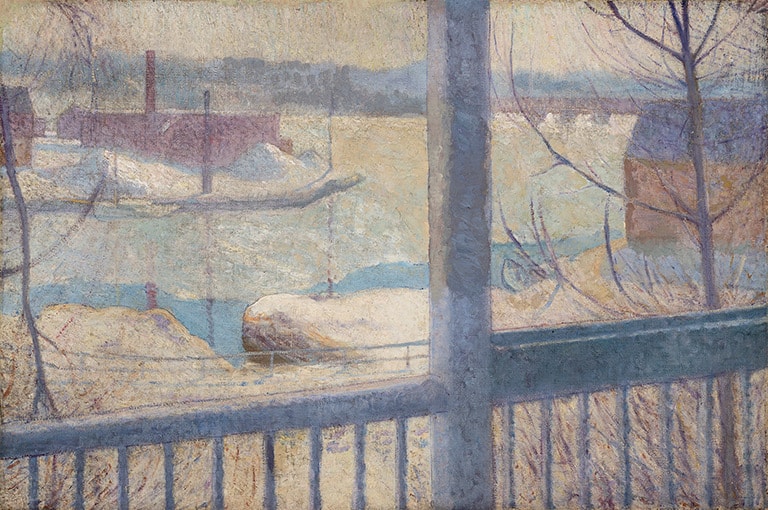
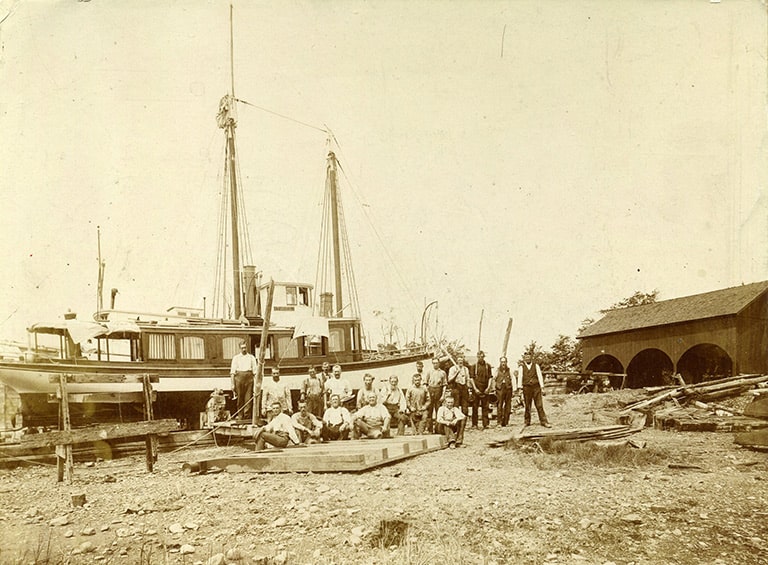
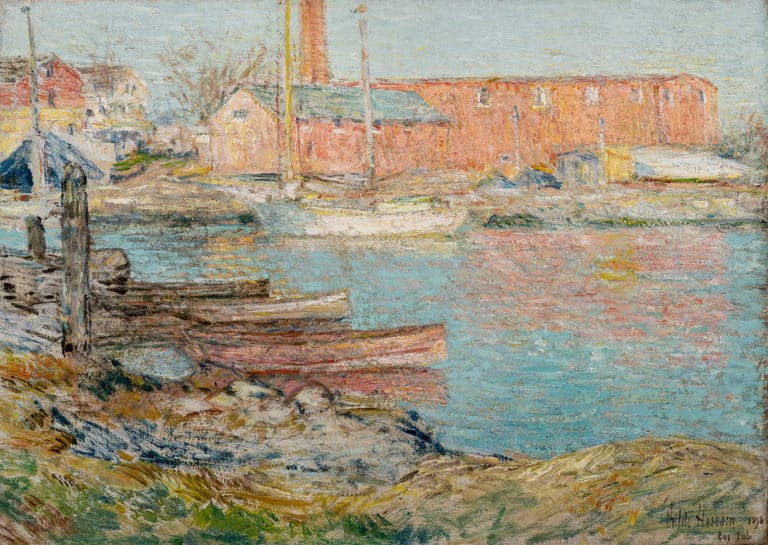
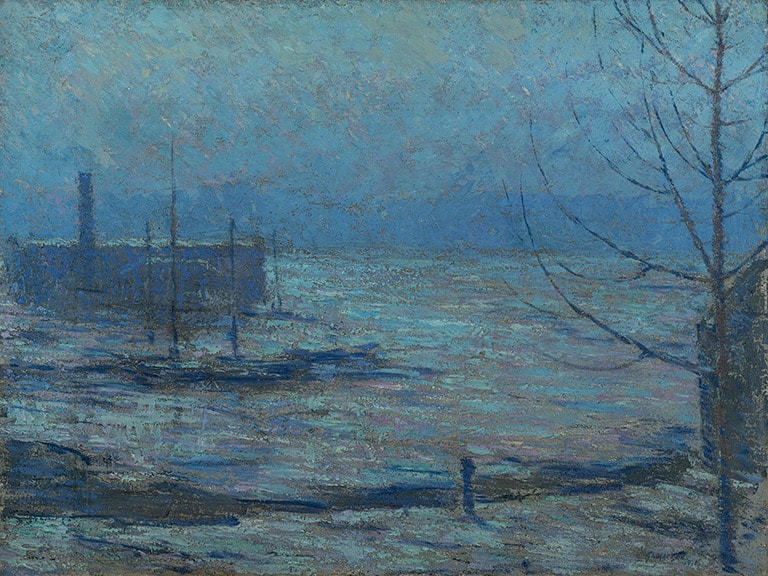
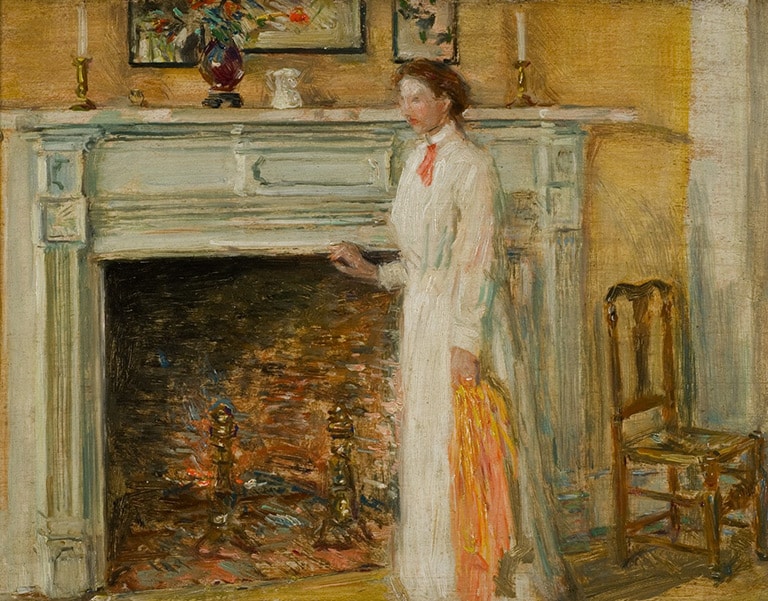
Member Preview Days:
Wednesday, Thursday and Friday January 13, 14 and 15
General Admission
Admission to our galleries is by advanced online ticket reservation only.
Lost Landscape Revealed: Childe Hassam and The Red Mill, Cos Cob
is generously supported by:
First Republic Bank
Sally and Larry Lawrence
On a late summer day in 1896, painter Childe Hassam (1859‒1935) left the Holley boardinghouse with easel, paints, brushes and canvas in hand. Crossing Strickland Road the artist headed south, skirting the old tide mill on the water’s edge. Passing a group of dilapidated waterfront warehouses, he settled on an empty stretch of waterfront overlooking the Cos Cob Harbor. From this spot Hassam had an unobstructed view of a cluster of shabby wooden buildings on the opposite shore, their faded red paint glowing brightly in the sun.
This collection of sheds and shops was the once-humming center of the Palmer & Duff shipyard, where for over 50 years shipbuilders worked on the sloops and schooners that dotted the harbor of the busy waterfront village of Cos Cob’s Lower Landing. The shipyard became the subject of Hassam’s painting The Red Mill, Cos Cob. It is one of a handful of canvases completed during Hassam’s initial stay at the Holley House, the first of many visits the artist would make between 1896 and 1918.
Despite his fondness for Cos Cob, Hassam saw the village through the romantic lens of an artist and a visitor to this waterfront community. Painted in rich colors with an energetic brush, The Red Mill, Cos Cob presents a relic of bygone New England waterfront industry scrubbed of its rough edges.
This intimate focus exhibition, drawn primarily from the Greenwich Historical Society’s museum and archival collections, invites visitors to take a closer look at the Lower Landing of Hassam’s era, a vibrant community with many stories to tell.
Explore the World of The Red Mill, Cos Cob
Exhibition Programs
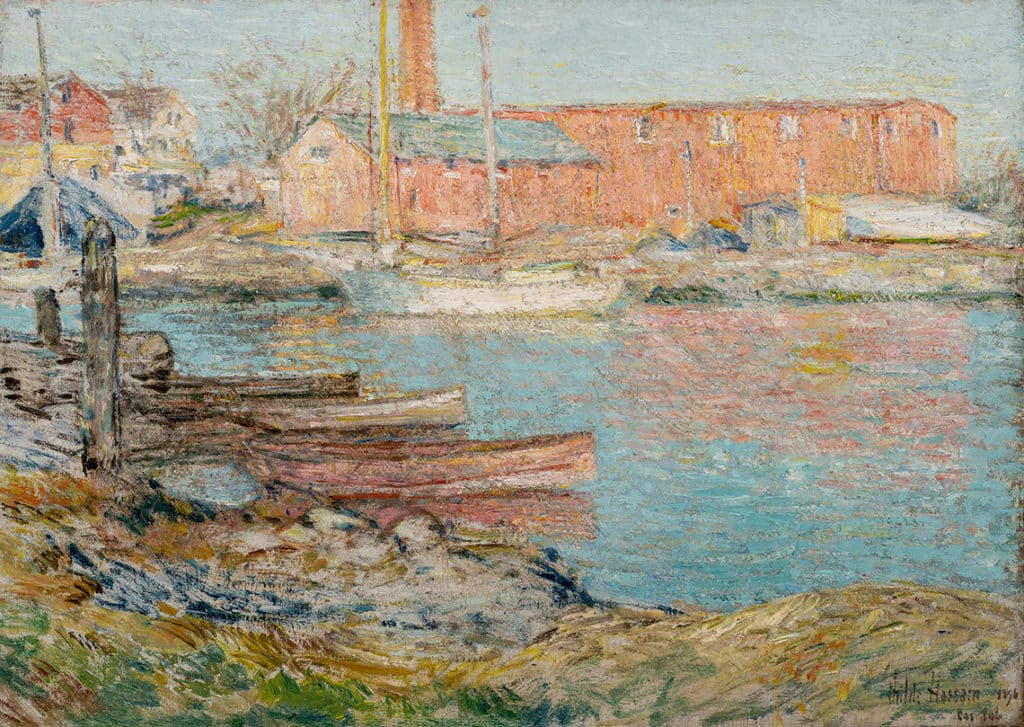
Maggie Dimock, Greenwich Historical Society Curator of Exhibitions and Collections, presented this illustrated lecture on renowned American Impressionist artist Childe Hassam and his close ties to the village of Cos Cob. Learn more about the thriving art colony that grew around the 18th-century Cos Cob boardinghouse run by the Holley family (now operated by the Historical Society as the Bush-Holley House Museum), and delve into the story behind one of Hassam’s earliest Cos Cob paintings, The Red Mill, Cos Cob. Presented by First Republic Bank.
Learn More
Delve deeper into the themes of the exhibit with essays written by our curators. Check back as we add more content regularly.
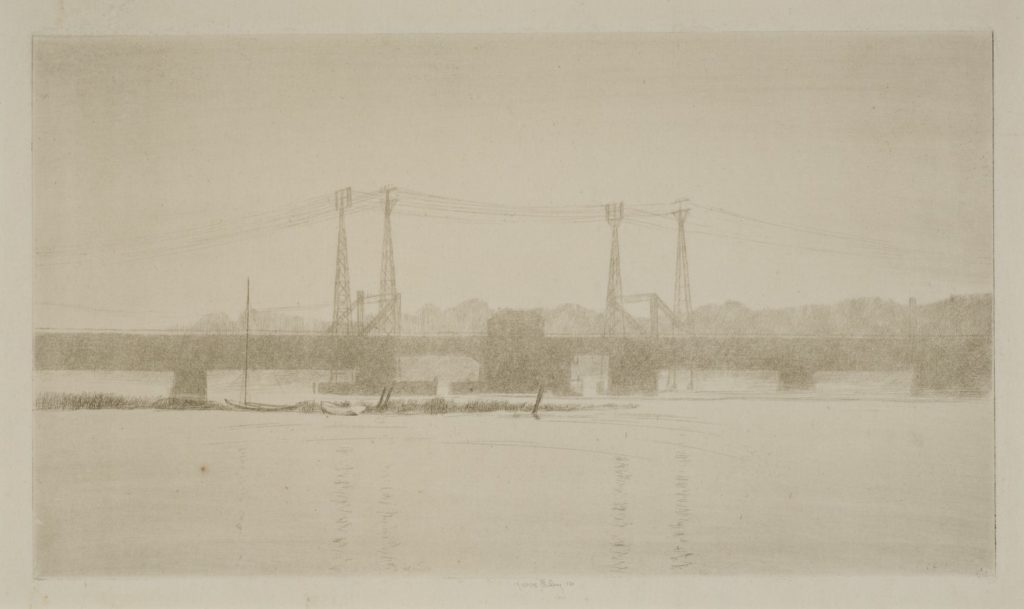
Spotlight on Printmaker Kerr Eby
Kerr Eby (1889–1946) was a Canadian illustrator who is well known for etchings that depict his experiences serving in World War I and World War II. Born in Tokyo, Japan to Canadian missionaries, Eby spent most of his childhood in Canada. His parents encouraged him to study art and he moved to New York City in 1907 to attend the Pratt Institute in Brooklyn before eventually taking classes at the Art Students League in Manhattan. While there Eby would form friendships with influential artists such as John Henry Twachtman and Childe Hassam, founders of the Cos Cob Art Colony.

Painting the Ship Yard
Founded in 1848, in its heyday Palmer & Duff built commercial sailing vessels used as market boats for transporting farm products to New York City. By the 1890s their business was in decline and shifted to repairing the oyster sloops still in operation on the Long Island Sound, and servicing pleasure yachts owned by wealthy New Yorkers who had begun settling in Greenwich. A decade after Hassam made this painting the Palmer & Duff shipyard closed for good.
Hassam was not the only Cos Cob artist to turn his attention toward the shipyard. Theodore Robinson, Charles Ebert and Ernest Lawson all painted views of the Palmer & Duff buildings between the 1890s and 1910s.
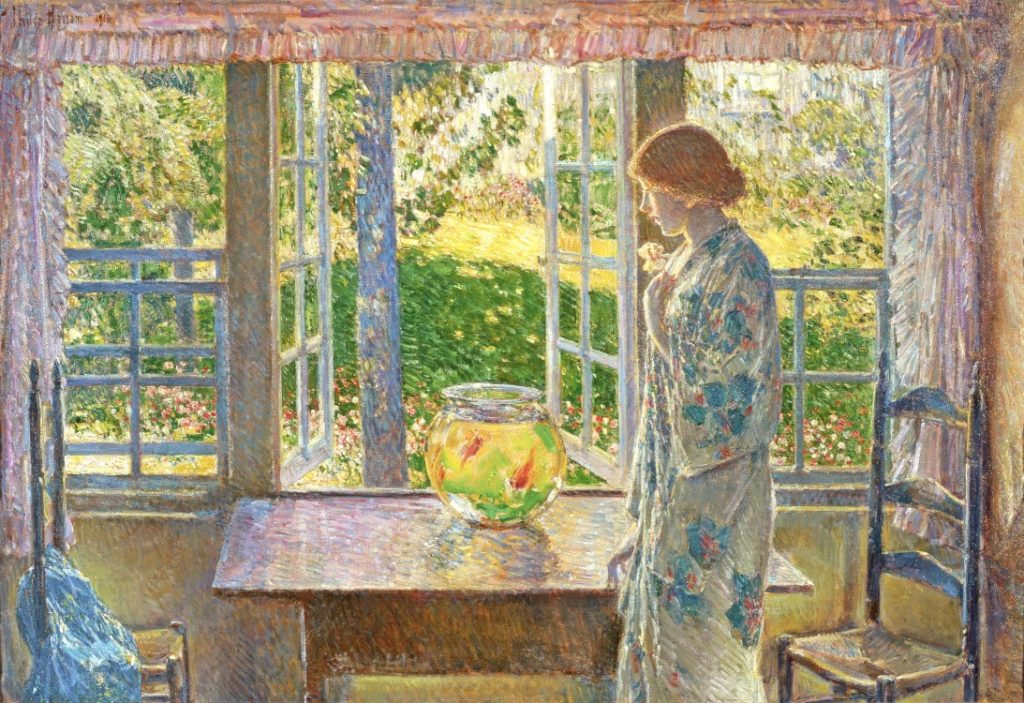
Hassam in Cos Cob
Childe Hassam’s first trip to Greenwich, Connecticut probably took place in 1894 when he paid a visit to his friend, artist John Henry Twachtman, who purchased a house in the town in 1890. Through Twachtman, Hassam came to know the Holley family, and beginning in 1896 he made nearly annual trips to stay in their boardinghouse in the nearby village of Cos Cob, lodging there for weeks or sometimes months at a time. Often he was accompanied by his wife, Kathleen Maud Hassam.
For Hassam and many of the artists, art students, writers, journalists and other cultural luminaries who frequented Cos Cob in the summers around the turn of the twentieth century, the village was ideally located – a short ride by train from New York’s Grand Central Station, but a world apart from the busy urban landscape.
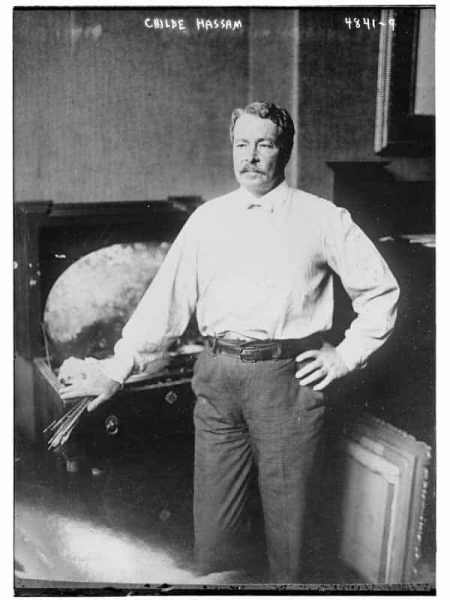
From the Archives: Letters from Childe Hassam
The Greenwich Historical Society’s exhibition Lost Landscape Revealed: Childe Hassam and The Red Mill, Cos Cob (January 16-March 28, 2021) focuses on the Cos Cob lower landing during the period of the Cos Cob art colony. The exhibition uses numerous items from the Historical Society’s archival and museum collections to bring this period to life, including paintings, photographs, business records and correspondence.
One of the many things to appreciate about these primary source materials is the way they can offer tangential insights into the lives of their authors.
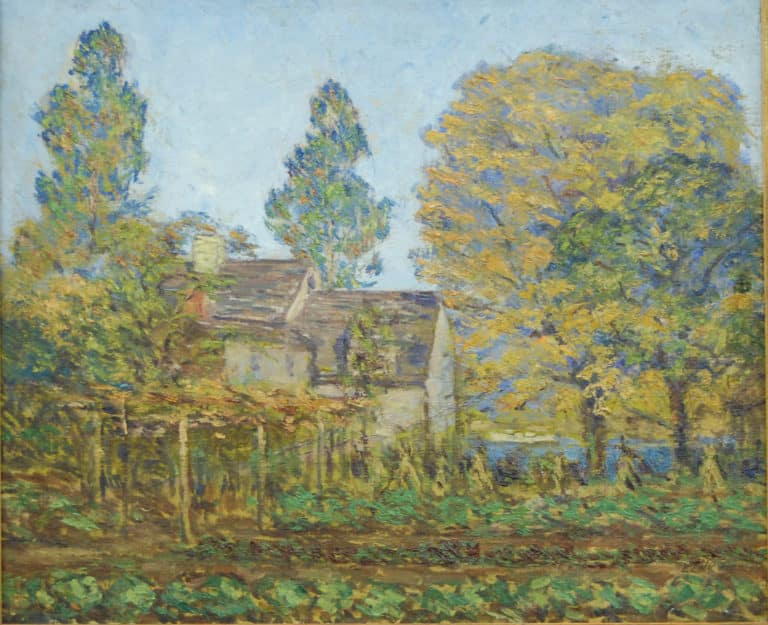
What is Impressionism ?
Impressionism is an art movement that began in France in the late 1800’s. It is also the art style most associated with the Cos Cob art colony.
Impressionism is a style of painting in which artists did not paint something that looked exactly like what they saw in real life, but rather an image that expressed their “impression” of it. The impressionist would strive to capture big ideas on the canvas rather than focus on the details of a landscape.
Lost Landscape Revealed: Childe Hassam and The Red Mill, Cos Cob is generously supported by First Republic Bank and Sally and Larry Lawrence.


